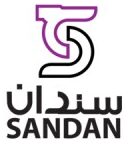As Oman steps firmly into a new era of economic diversification, the year 2025 marks a pivotal milestone for the country’s industrial landscape. With strategic goals outlined in Vision 2040, Oman is actively encouraging private sector growth, technological innovation, and international investment. A core pillar supporting this momentum is the introduction of robust government-backed programs, collectively referred to as Oman Industrial Incentives 2025.
These incentives are designed to accelerate industrial development, reduce operational barriers, and attract both local entrepreneurs and global investors. From generous tax holidays and customs exemptions to capital grants and subsidized land, Oman’s industrial incentives 2025 provide the financial and operational support that modern businesses need to thrive in a competitive market.
Whether you’re launching a manufacturing unit, setting up a logistics base, or investing in sustainable technology, understanding how the Oman industrial incentives 2025 work can be the key to unlocking long-term profitability and growth. In this blog, we’ll explore the types of incentives available, who’s eligible, how to apply, and why Oman—especially industrial zones like Sandan—offers one of the most business-friendly environments in the Gulf.
The Vision Behind Oman’s Industrial Incentives
The launch of Oman industrial incentives 2025 is a direct reflection of the Sultanate’s long-term commitment to economic diversification, job creation, and private sector empowerment. These incentives are not merely financial tools—they are part of a broader national strategy that aligns closely with the objectives of Oman Vision 2040.
A Strategic Shift in Economic Planning
Vision 2040 places industrial development at the center of Oman’s transition from an oil-reliant economy to a knowledge-based, sustainable, and globally competitive nation. The Oman industrial incentives 2025 initiative is a tangible outcome of this vision, encouraging local production, value-added services, and the growth of non-oil sectors.
Diversification and Employment Objectives
One of the key aims of the incentives is to boost employment for Omani nationals by creating a thriving industrial ecosystem. Whether through manufacturing plants, logistics hubs, or technology parks, the government seeks to generate high-value job opportunities and reduce the country’s reliance on imports. The Oman industrial incentives 2025 also support entrepreneurship and SME development, enabling smaller players to compete and scale.
Targeted Sectors Under Oman Industrial Incentives 2025
The government has outlined specific industries that will receive prioritized support. These include:
- Manufacturing and light industry
- Logistics and supply chain services
- Renewable energy and clean technologies
- Agro-processing and food security-related sectors
- Healthcare manufacturing (pharmaceuticals, equipment)
- Technology and digital infrastructure
By concentrating incentives on these high-potential areas, Oman aims to develop industry clusters that can compete on a global scale and integrate into regional value chains.

Why Do These Sectors Matter?
Manufacturing and logistics are seen as core economic drivers that can transform Oman into a regional export hub. Green tech and renewable energy are aligned with global sustainability goals. With Oman industrial incentives 2025, the Sultanate is not just incentivizing investment—it is signaling a future-facing commitment to sustainable industrialization and economic resilience.
These well-structured incentives make Oman an increasingly attractive destination for investors who value long-term growth, market access, and government support.
Key Types of Industrial Incentives in 2025
The Oman industrial incentives 2025 program encompasses a comprehensive range of benefits aimed at reducing barriers to entry, lowering operational costs, and enhancing competitiveness for businesses. Whether you are a local manufacturer, a foreign investor, or an SME entering Oman’s industrial sector, the government has tailored various incentives to support your journey from setup to scale.
Below is a breakdown of the key types of incentives available in 2025 and who can benefit from them.
#1 Capital Investment Grants
Under the Oman Industrial Incentives 2025, qualifying businesses may receive non-repayable capital grants to offset the cost of setting up industrial operations. These grants are especially targeted at manufacturing firms, clean technology developers, and high-tech industries. Funding is typically tied to project scale, job creation, and alignment with national development goals.
Eligibility:
- Omani-registered companies in priority sectors
- Businesses that commit to hiring Omani nationals
- Projects contributing to technology transfer or sustainability
#2 Land Subsidies or Reduced Lease Rates
To make industrial land more accessible, the government is offering subsidized lease rates in key industrial zones such as Sandan, Sohar, and Salalah. In some cases, the first few years of leasing may be rent-free or heavily discounted.
Eligibility:
- Businesses operating in designated industrial zones
- Investors in manufacturing, logistics, and energy sectors
- Companies approved by the Ministry of Commerce, Industry & Investment Promotion (MoCIIP)
#3 Customs Exemptions on Machinery and Raw Materials
As part of the Oman industrial incentives 2025, imported equipment, raw materials, and spare parts used for industrial production may be exempt from customs duties. This significantly reduces startup and operating costs, especially for manufacturers and assembly units.
Eligibility:
- MoCIIP-approved businesses
- Warehousing and logistics companies with import/export operations
- Businesses located in free zones or special economic areas
#4 Financial Support for SMEs and Startups
Recognizing the importance of small businesses, Oman’s 2025 incentives include dedicated financing schemes, low-interest loans, and mentoring programs for SMEs. Special grants and accelerator support are also available for startups in tech, clean energy, and value-added manufacturing.
Eligibility:
- Registered SMEs in the Al Raffd Fund or other national programs
- Startups aligned with Vision 2040 goals
- Entrepreneurs developing innovative products or localizing manufacturing
These incentive structures make Oman Industrial Incentives 2025 one of the most well-rounded and future-focused industrial support programs in the GCC, positioning Oman as a destination of choice for both local and foreign investors.
Tax Incentives & Holiday Schemes
One of the most attractive aspects of the Oman Industrial Incentives 2025 program is the robust suite of tax exemptions and holiday schemes that significantly reduce operational costs for industrial investors. These incentives aim to stimulate long-term investment, enhance Oman’s competitiveness in the region, and support the development of future-forward sectors such as logistics, renewable energy, and advanced manufacturing.
#1 Corporate Tax Exemptions (5–10 Years)
Under the 2025 incentives framework, eligible businesses in designated industrial sectors may enjoy corporate income tax exemptions ranging from 5 to 10 years. This exemption applies to both local and foreign-owned enterprises operating in manufacturing, logistics, agro-processing, and export-oriented sectors.
The renewal of the tax holiday beyond the initial period is possible if the company meets certain conditions, such as continued employment of Omani nationals and sustained reinvestment in operations.
#2 Free Zone Tax Benefits
Companies operating in Oman’s free zones (e.g., Sohar, Salalah, Duqm) benefit from additional tax reliefs, including:
- Zero corporate tax for up to 30 years
- No import/export duties
- 100% foreign ownership
- Repatriation of capital and profits
These zones are strategically aligned with the Oman industrial incentives 2025, serving as hubs for industrial activity, re-export, and international trade.
#3 Tax Holidays for Strategic Sectors
To promote sustainability and digital transformation, the government offers sector-specific tax holidays. Businesses in the following areas may receive extended exemptions or reduced tax rates:
- Renewable energy (solar, wind, green hydrogen)
- Technology and digital infrastructure
- Supply chain and logistics operations
- Pharmaceutical and healthcare manufacturing
These holidays support Oman’s push toward a greener, tech-enabled industrial ecosystem—an integral part of the Oman Industrial Incentives 2025 vision.
Reducing the Tax Burden for Investors
For both domestic and international companies, these tax schemes present a significant financial advantage. By minimizing the tax burden, the Oman industrial incentives 2025 program increases project feasibility, accelerates breakeven timelines, and encourages reinvestment into local operations.
Combined with land, customs, and financial incentives, these tax benefits position Oman as a standout destination for cost-efficient and sustainable industrial growth.
Subsidized Land & Infrastructure Access
A critical component of the Oman industrial incentives 2025 framework is the provision of affordable, infrastructure-ready land in government-designated industrial zones. The aim is to remove one of the most significant barriers to entry—high land and development costs—while encouraging industrial expansion in strategically planned locations across the country.
#1 Government Land Leasing Programs
Through partnerships with industrial estate operators and ministries like MoCIIP, Oman offers long-term land leases at highly subsidized rates. These leases can extend up to 25 years or more, with some projects receiving initial rent-free periods or nominal annual charges during the startup phase.
Land is allocated based on business type, size, employment potential, and alignment with Oman Vision 2040 goals. The Oman industrial incentives 2025 structure ensures faster application approvals and support for foreign and local investors alike.
#2 Strategic Zones with Added Incentives
Industrial zones such as Sandan, Sohar, Salalah, and Duqm are central to this initiative. Choosing to establish your business in these zones unlocks:
- Streamlined permits and approvals
- Built-in infrastructure (roads, drainage, power grids)
- Proximity to ports, airports, and trade corridors
- Business support services (banking, logistics, labor housing)
For example, Sandan Industrial Park offers easy access to Muscat Airport, flexible leasing, and a vibrant ecosystem of commercial services—all aligned with Oman industrial incentives 2025.
#3 Discounts on Utilities and Services
Oman’s industrial support also extends to operational overhead. Eligible businesses may receive:
- Reduced electricity tariffs for manufacturing and green industries
- Subsidized water supply for production or cooling needs
- Priority connections for telecom, internet, and waste management
These utility incentives significantly reduce monthly costs and support sustainable, large-scale operations.
#4 Ready-to-Use Industrial Infrastructure
Unlike undeveloped plots in other markets, Oman’s industrial parks provide plug-and-play solutions with ready access to:
- Paved access roads and loading bays
- Power substations and telecom infrastructure
- Water pipelines, fire safety, and drainage systems
With Oman industrial incentives 2025, businesses can move in faster, operate with fewer setup challenges, and focus directly on growth, making Oman’s industrial land offerings among the most investor-friendly in the GCC.
Incentives for Foreign Investors and Joint Ventures
The Oman industrial incentives 2025 program has opened up new doors for international investors by offering one of the most open and transparent investment climates in the Gulf. Foreign companies looking to establish a presence in Oman can now benefit from liberal ownership laws, streamlined registration processes, and tailored support from key government bodies.
#1 100% Foreign Ownership Policies
One of the landmark reforms in Oman’s investment framework is the allowance for 100% foreign ownership in most industrial and commercial sectors. This eliminates the need for a local sponsor, giving international investors full control over operations, profits, and strategic direction.
This reform is a cornerstone of the Oman Industrial Incentives 2025, aimed at attracting global manufacturing giants, logistics firms, and tech-based industries.
#2 Simplified Company Registration
Through the Ministry of Commerce, Industry, and Investment Promotion (MoCIIP), the company registration process has become faster and more digitalized. Foreign investors can now complete most steps online, with support for business licensing, land allocation, and tax registration.
The use of the “Invest Easy” portal and the guidance provided by Invest Oman ensures smoother entry into Oman’s market, especially for newcomers unfamiliar with regional regulations.
#3 Joint Ventures with Local Partners
While 100% ownership is now allowed, joint ventures still offer distinct advantages. Many of the Oman industrial incentives 2025 are enhanced when foreign firms collaborate with local partners, such as:
- Priority land allocation
- Easier access to labor permits
- Eligibility for public sector tenders
Special incentive packages, including co-financing or performance-based grants, may be available for these joint ventures, particularly in sectors like food processing, logistics, and renewable energy.
#4 Strategic Government Support
Invest Oman and MoCIIP play critical roles in supporting foreign investors and JV setups. Their services include:
- Investor matchmaking
- Site selection support
- Permitting and compliance guidance
- Incentive application facilitation
Through these agencies, the Oman industrial incentives 2025 become not just policy promises, but actionable advantages that turn ideas into scalable, profitable ventures.
Green & Innovation-Based Incentives
The Oman industrial incentives 2025 initiative is not only focused on traditional manufacturing and logistics but also places strong emphasis on sustainable development and industrial innovation. The government is actively supporting businesses that prioritize environmental responsibility, technological advancement, and long-term ecological value.
#1 Support for Environmentally Sustainable Industries
Companies involved in renewable energy, eco-friendly manufacturing, or low-emission production methods are receiving significant support under the 2025 incentive framework. Oman is encouraging industries that align with sustainability standards by offering streamlined environmental approvals, lower utility costs, and access to designated green industrial zones. This creates a favorable environment for businesses that are committed to reducing their carbon footprint and contributing to the country’s climate goals.
#2 R&D Grants and Clean Tech Subsidies
Innovation is central to Oman’s future industrial strategy. As part of Oman’s industrial incentives 2025, the government is offering R&D grants and financial subsidies for companies working on clean technologies.
Enterprises engaged in solar energy, water recycling, smart grid systems, or advanced materials can qualify for co-financing opportunities that lower the risks and costs associated with product development and deployment. These incentives are especially appealing to startups and mid-sized companies driving innovation in clean and efficient systems.
#3 Incentives for Automation and Industry 4.0
Beyond green practices, Oman is promoting digital transformation across its industrial sectors. Businesses adopting Industry 4.0 technologies—such as automation, robotics, AI, and data-driven manufacturing—are eligible for incentives that ease the integration of advanced systems into their operations.
The Oman industrial incentives 2025 include support for technology imports, tax rebates, and access to skilled labor development programs aimed at upskilling the local workforce. This ensures that modern industries can scale efficiently while remaining globally competitive.
Paving the Way for Future-Focused Businesses
By combining sustainability with innovation, the Oman industrial incentives 2025 are clearly designed to attract visionary businesses. Companies that embrace clean energy, digital transformation, and responsible growth will find Oman to be a supportive, strategically located, and future-ready industrial base. These incentives not only foster environmental responsibility but also empower businesses to lead tomorrow’s global economy.
Accessing the Incentives: How to Apply?
While the Oman industrial incentives 2025 offer compelling benefits, unlocking them requires navigating a structured application process. The government has taken steps to simplify this journey, especially for foreign investors and SMEs, but understanding each step is key to avoiding delays.
Where to Apply?
Businesses can access incentives through several official channels depending on their location and industry type. The Ministry of Commerce, Industry and Investment Promotion (MoCIIP) oversees most incentive applications and provides centralized support for approvals. Companies setting up in free zones such as Sohar, Salalah, or Duqm will apply directly through the respective free zone authorities. Similarly, industrial parks like Sandan also facilitate incentive applications in collaboration with government entities.
Required Documentation
To apply for Oman industrial incentives 2025, companies must submit a detailed business plan, commercial registration documents, investment proposal, financial projections, and a feasibility study. Depending on the type of incentive, environmental impact assessments and land use plans may also be required. The documentation should demonstrate alignment with Oman Vision 2040, including job creation, sustainability goals, and economic impact.
Timeline for Approvals
Approval timelines vary based on the type and complexity of the request. Simple applications—such as land leasing or customs exemptions—may take between two to four weeks. More comprehensive requests involving capital grants or tax holidays can take up to three months. Working with local consultants or park authorities can help expedite the process by ensuring all forms and supporting materials are correctly prepared and submitted.
Common Challenges and How to Overcome Them
The most common hurdles include incomplete documentation, misalignment with priority sectors, and delays in inter-agency communication. To overcome these issues, businesses are encouraged to consult directly with Invest Oman or industrial park advisors who are well-versed in the workings of the Oman industrial incentives 2025. These advisors can help interpret legal requirements, manage paperwork, and liaise with government bodies, minimizing the risk of rejection or delay.
Spotlight: Sandan’s Industrial Support Ecosystem
As Oman pushes forward with Vision 2040 and its industrial development goals, Sandan Industrial Park has emerged as a key enabler for businesses looking to establish operations under the Oman Industrial Incentives 2025 initiative. Strategically located near Muscat and close to the international airport and major highways, Sandan offers unmatched logistical connectivity and business convenience.
Positioned for Industrial Growth
Sandan plays a pivotal role in Oman’s broader industrial expansion strategy. By offering ready-to-use infrastructure in a well-planned industrial setting, it attracts both local and international investors across various sectors, including manufacturing, logistics, automotive, electronics, and retail. Sandan’s location makes it especially attractive for businesses involved in import-export, distribution, and production.
Seamless Support for Permits and Leasing
One of Sandan’s core advantages lies in its integrated administrative support. Investors benefit from on-site assistance with permits, licensing, and regulatory approvals, easing the process of tapping into Oman’s incentive programs. Whether you are applying for land leasing, utility access, or industrial permits, Sandan’s management works closely with government authorities like MoCIIP and Invest Oman to ensure timely processing and compliance.
Gateway to Oman Industrial Incentives 2025
By operating from Sandan, businesses can more easily qualify for Oman industrial incentives 2025 due to the park’s alignment with national development goals. The park’s zoning, infrastructure readiness, and tenant diversity align with the incentive framework’s focus areas, such as logistics, manufacturing, and tech-driven industries. Investors can also expect smoother documentation processes, simplified lease agreements, and guidance on grant applications.
Facilities Designed for Growth
Sandan offers a complete industrial ecosystem with facilities that include secure warehouse spaces, showrooms, retail outlets, financial services, car care centers, and restaurants. This holistic environment supports both operational efficiency and employee convenience, making it an ideal launchpad for scalable, long-term ventures.
For entrepreneurs and enterprises seeking a competitive advantage, Sandan stands as a smart, strategic, and supportive base to activate and maximize the Oman industrial incentives 2025.
Tips for Businesses to Maximize Incentives
Tapping into the full potential of the Oman industrial incentives 2025 isn’t just about applying—it’s about strategic alignment and smart execution. Businesses that approach their investment with long-term planning and local insight stand to benefit the most.
#1 Align with National Strategy
To qualify for and maximize the benefits offered under Oman’s incentive program, it’s essential to align your business model with the country’s broader economic goals. Focus areas such as manufacturing, logistics, clean energy, and technology are highly favored. By tailoring your operations to support Vision 2040 priorities, you increase your chances of receiving approvals and accessing high-value incentives.
#2 Choose the Right Location
Incentives often vary based on where your business is located. Setting up in integrated industrial parks like Sandan, Sohar, or Duqm can simplify the approval process and give you faster access to utilities, permits, and infrastructure. These zones are also well-positioned to benefit from the logistics and land-related advantages under the Oman Industrial Incentives 2025.
#3 Stay Informed and Compliant
Regulations can evolve, especially in a progressive economic environment like Oman’s. Staying up to date with policy changes, compliance guidelines, and new incentive schemes ensures you don’t miss out on additional benefits or fall behind on legal requirements.
#4 Engage Local Experts
Working with trusted local consultants or industrial park advisors helps navigate government channels more efficiently. These professionals can assist with documentation, negotiations, and incentive applications, streamlining your journey through the Oman Industrial Incentives 2025 framework.
FAQs
What are the key benefits offered under Oman Industrial Incentives 2025?
The Oman industrial incentives 2025 include corporate tax exemptions, subsidized industrial land, customs duty waivers on machinery and raw materials, and financial grants for qualifying businesses. These incentives are aimed at promoting investment in manufacturing, logistics, renewable energy, and technology.
Who is eligible to apply for the Oman industrial incentives 2025?
Eligibility is open to both local and foreign investors registered in Oman. Businesses must operate in approved sectors such as logistics, clean energy, manufacturing, or tech, and align with Oman’s Vision 2040 goals. Companies located in designated industrial zones like Sandan may also receive additional advantages.
How can foreign investors benefit from the Oman industrial incentives 2025?
Foreign investors can take advantage of 100% ownership policies, fast-tracked licensing, access to subsidized land in free zones, and exemption from corporate taxes for up to 10 years. The Oman industrial incentives 2025 are specifically structured to attract global investment in future-ready sectors.
Are there specific incentives for green or tech-based industries in Oman?
Yes. The Oman industrial incentives 2025 provide dedicated support for environmentally sustainable businesses and innovation-focused companies. This includes R&D grants, clean tech subsidies, and incentives for adopting Industry 4.0 technologies such as automation and AI.
What is the application process to access the Oman industrial incentives 2025?
Businesses can apply through the Ministry of Commerce, Industry and Investment Promotion (MoCIIP), free zone authorities, or industrial park management teams. The process involves submitting a business plan, investment proposal, and other required documents. Approvals typically range from two weeks to three months, depending on the incentive type.

Conclusion
The Oman industrial incentives 2025 reflect the nation’s forward-thinking commitment to building a diversified, competitive, and sustainable economy. With a powerful combination of tax holidays, subsidized land, customs exemptions, and targeted support for innovation and green industries, these incentives are designed to make Oman one of the most attractive industrial investment destinations in the Gulf.
Whether you are an established manufacturer, a logistics operator, or an entrepreneur in clean technology, the benefits offered under Oman’s 2025 industrial roadmap can significantly lower your setup and operating costs while boosting long-term returns. Strategic industrial zones like Sandan Industrial Park further enhance this opportunity by providing ready infrastructure and direct support for navigating approvals and leasing.
Now is the ideal time to take the next step. If you’re considering investing in Oman or looking to expand your industrial operations, leverage the strength of the Oman industrial incentives 2025 to grow faster and smarter.
Connect with Sandan today to explore land, leasing, and incentive-ready solutions tailored to your business goals.












